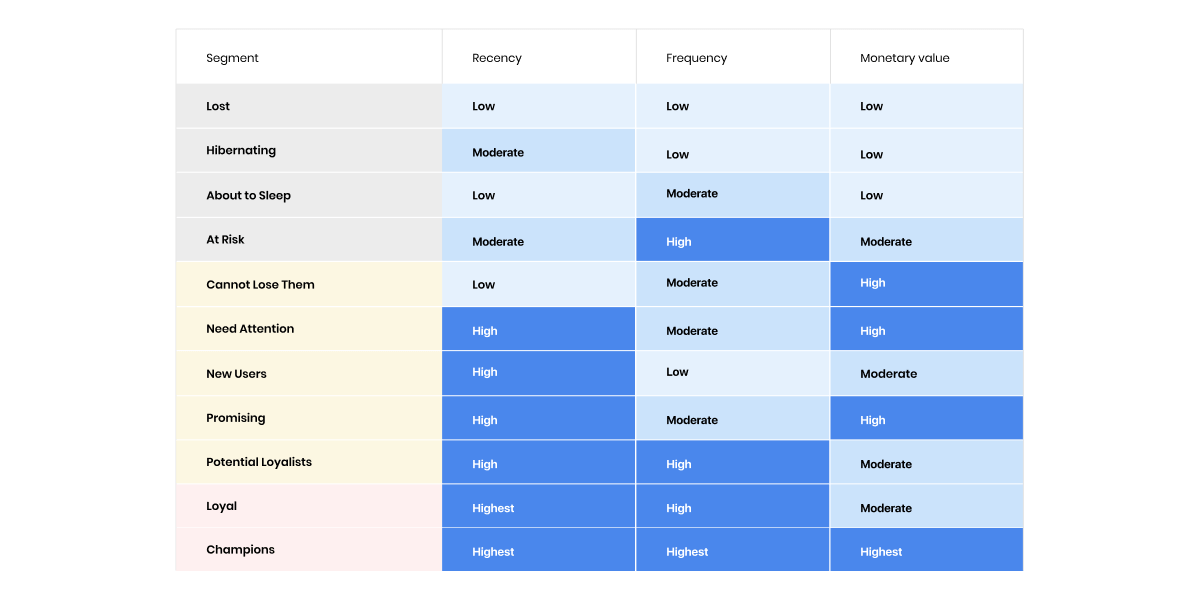Pop quiz!
Situation A: A user spends $1000 on your website every three months.
Situation B: A user spent $100 last year in July.
Which one is the more valuable one?
How do you calculate and keep track of such data? With the help of an RFM Analysis.
What is RFM?
RFM stands for Recency, Frequency, and Monetary Value.
Recency: Recency denotes how recently a user performed on your platform. The recency score of 1 to 5 denotes least recent performance to most recent.
Frequency: Frequency indicates how often the user performs on your platform. The frequency score of 1 to 5 denotes performed once to the highest number of times.
Monetary Value: Monetary Value is the amount of money spent by the users while performing a monetary event on your website. The purchase value is tracked through custom attributes, and a monetary value score of 1 to 5 is given, where 1 denotes the lowest purchase value, and 5 denotes the highest purchase value.
What is an RFM Anlaysis?
RFM Analysis is a scientific scoring model for users based on the recency, frequency, and monetary value of their transactions and performance. Based on the scores, predictive segmentation is done for setting targeted marketing campaigns.
Why is RFM analysis critical to your business?
Customer Segmentation: RFM analysis helps segment your target audiences into various groups based on their score. The segments will help you differentiate an inactive customer from a loyal customer. This allows you to design campaigns keeping in mind the sentiment of your target audience.
Targeted Marketing Campaigns: Marketing Campaigns have more to them than just outreach. Marketing campaigns are also meant to initiate communication with inactive customers, engage with promising users and check up on the loyalists. Every segment on the RFM grid denotes unique behavioral traits specific to the user’s performance and history. RFM Analysis helps you create and utilize these segments and send relevant messaging.
Return on Marketing & Advertising Expenses: Predictive RFM Segmentation helps you target your ads to the right audience, thereby creating more impact and optimizing ad expenditure.
How is RFM analysis used?
RFM Analysis is used to segment customers based on recency, frequency, and Monetary Value. It is represented on a grid for better understanding.

The grid denotes ten segments based on the RFM analysis. As you can see, axis Y depicts Frequency, and axis X indicates Recency. The grid doesn’t show lost users, as they may have already uninstalled your application.

Here is a tabular representation of the eleven segments that RFM Analysis can derive. As you can see, each segment has a varied Recency, Frequency and Monetary Value. Based on their performance in the present, their behavioral traits are recorded, and they are sent a message that resonates with them.
Summary
RFM analysis is widely used for customer segmentation across industries. It is a valuable technique to guide marketing efforts in the right place at the right time.
Furthermore, it helps you segment your target audiences into various groups based on their score. The segments will help you differentiate an inactive customer from a loyal customer. This allows you to design campaigns keeping in mind the sentiment of your target audience in mind.





